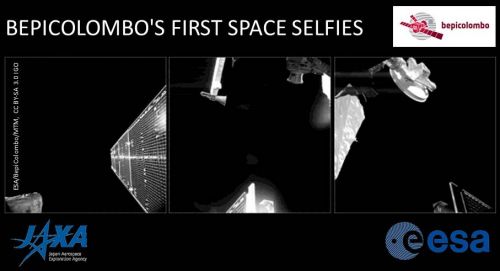
25/10/2018
SENER: on the way to Mercury!
SENER: on the way to Mercury!
BepiColombo module, composed of two satellites developed by the European Space Agency and its Japanese counterpart, respectively, took off from Kourou (French Guiana) on last October 19 to initiate its journey towards Mercury, a planet little explored and still very mysterious.
In this project, the SENER group companies with Catalan headquarters in the Barcelona Synchrotron Park are responsible for the low-gain antennas, the medium-gain antenna and the waveguides for routing the signal and the pointing mechanism for the high-gain antenna. These units are responsible for staying in contact with the Earth at all times by transmitting the satellite's telemetry and receiving its telecommands, as well as sending all the scientific data. SENER also manufactured the magnetometer boom, which separates the instruments from the satellite's magnetic influence. All these instruments are thus a critical element to the success of the mission.
BepiColombo launch is just the beginning of a 7-year very long trip (8.5 billion kilometers): Although Mercury, the nearest planet from the Sun, is relatively closed (the shortest Earth-Mercury distance is 80 million kilometers), the giant mass of the Sun does not allow a straight trip: if so, BepiColombo could not be decelerated and would inexorably fall into our star.
The technological challenge imposed by the proximity of the Sun is huge. For instance, some materials will have to resist to both extremely low (-170ºC) and high (450ºC) temperatures.
When BepiColombo arrives close to Mercury in December 2025, both scientific modules (MPO for Europe and Mio from Japan) will split up and begin their respective mission on two different orbits around the planet. MPO (11 instruments) will investigate the surface and the composition of Mercury and Mio (5 instruments) will focus on the environment (magnetosphere, atmosphere, dust, solar wind).
To follow the mission: here
Have a nice trip! See you there!
In this project, the SENER group companies with Catalan headquarters in the Barcelona Synchrotron Park are responsible for the low-gain antennas, the medium-gain antenna and the waveguides for routing the signal and the pointing mechanism for the high-gain antenna. These units are responsible for staying in contact with the Earth at all times by transmitting the satellite's telemetry and receiving its telecommands, as well as sending all the scientific data. SENER also manufactured the magnetometer boom, which separates the instruments from the satellite's magnetic influence. All these instruments are thus a critical element to the success of the mission.
BepiColombo launch is just the beginning of a 7-year very long trip (8.5 billion kilometers): Although Mercury, the nearest planet from the Sun, is relatively closed (the shortest Earth-Mercury distance is 80 million kilometers), the giant mass of the Sun does not allow a straight trip: if so, BepiColombo could not be decelerated and would inexorably fall into our star.
The technological challenge imposed by the proximity of the Sun is huge. For instance, some materials will have to resist to both extremely low (-170ºC) and high (450ºC) temperatures.
When BepiColombo arrives close to Mercury in December 2025, both scientific modules (MPO for Europe and Mio from Japan) will split up and begin their respective mission on two different orbits around the planet. MPO (11 instruments) will investigate the surface and the composition of Mercury and Mio (5 instruments) will focus on the environment (magnetosphere, atmosphere, dust, solar wind).
To follow the mission: here
Have a nice trip! See you there!
More news
05/02/2014
Award for the T-Systems Data Center located in the Barcelona Synchrotron Park
27/01/2014
Companies from the Barcelona Synchrotron Park will have a privileged access to the ICMAB scientific equipments
20/01/2014
The Catalan Institute of Nanoscience and Nanotechnology opens its new building
14/01/2014
Barcelona, the 4th smartest city in Europe
03/01/2014
The Vall d’Hebron Institut de Recerca becomes a UAB-affiliated research institute
28/11/2013
Visit of a Moscow City Council delegation at Barcelona Synchrotron Park (BSP)









